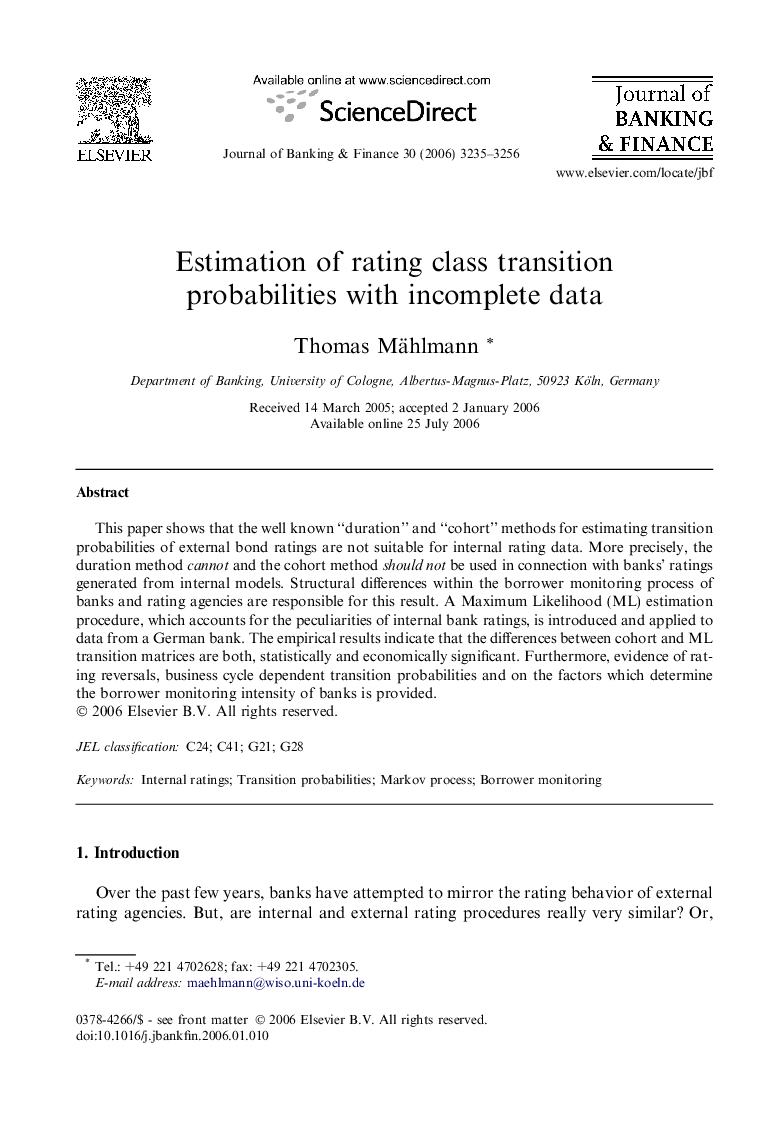| Article ID | Journal | Published Year | Pages | File Type |
|---|---|---|---|---|
| 5091170 | Journal of Banking & Finance | 2006 | 22 Pages |
Abstract
This paper shows that the well known “duration” and “cohort” methods for estimating transition probabilities of external bond ratings are not suitable for internal rating data. More precisely, the duration method cannot and the cohort method should not be used in connection with banks' ratings generated from internal models. Structural differences within the borrower monitoring process of banks and rating agencies are responsible for this result. A Maximum Likelihood (ML) estimation procedure, which accounts for the peculiarities of internal bank ratings, is introduced and applied to data from a German bank. The empirical results indicate that the differences between cohort and ML transition matrices are both, statistically and economically significant. Furthermore, evidence of rating reversals, business cycle dependent transition probabilities and on the factors which determine the borrower monitoring intensity of banks is provided.
Related Topics
Social Sciences and Humanities
Economics, Econometrics and Finance
Economics and Econometrics
Authors
Thomas Mählmann,
